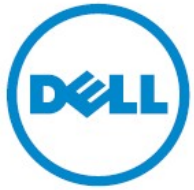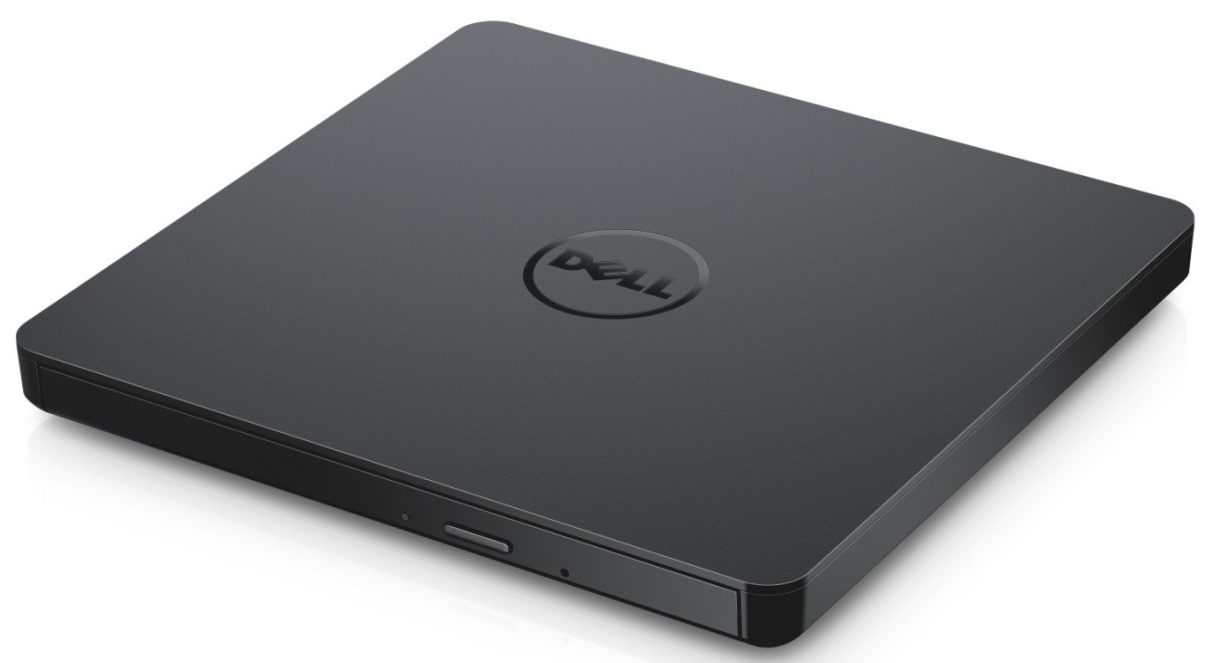Dell DR316 External USB Slim DVD-ROM Optical Drive User Guide

Dell External USB Slim DVD-ROM
Optical Drive-DR3 16
User’s Guide

| A NOTE indicates important information that helps you make better use of your computer. | |
| A CAUTION indicates potential damage to hardware or loss of data if instructions are not followed. | |
| A WARNING indicates a potential for property damage, personal injury, or death. |
Contents
a. Dell External USB Slim DVD-ROM Optical Drive-DR316
b. USB Y-cable (600 mm)
Information in this document is subject to change without notice.
Introduction
Drive Description
This is a read-only drive and reads CD and DVD media (Refer to Specification section for specific media types). This drive has a slim form factor.
Special Features Of The Drive
- USB 2.0 Interface (480 Mbps).
- Drawer load type, portable slim USB DVD-ROM Drive.
- CD-R/RW, DVD-R/RW/RAM/+R/+RW/+R DL/-R DL, M-DISC (DVD+R SL) read compatible.
- CD Family and DVD-ROM read compatible.
- Improved Buffer Under Run Error handling through the Preventive function.
- Supports both 12 cm and 8 cm standard round type disc.
- PC USB powered, no AC adapter needed.
- Eject button to eject the disc when the optical drive is powered by a computer.
- Emergency Eject hole to manually eject the disc in case of a drive failure or a power outage.
Using the Drive
Front Panel |
- Disc Tray
The disc tray opens automatically when you press the eject button. When you place a disc in the tray, ensure that the label on the disc is facing up. If you are not loading or unloading a disc, the tray should remain closed. - Indicator Light
The light blinks when there is drive activity. - Eject Button
Press this button to open the disc tray. This button works only when power is supplied to the drive. - Emergency Eject Hole
If the disc tray does not open when you press the eject button, power off the computer, insert a pin or unfolded paper clip in the hole, and push firmly. Refer to Emergency Eject instructions below.
Rear Panel |
- USB port
Connect to the USB port on the computer.
Drive Operation:
Inserting a Disc
- Press the eject button. The disc tray will be ejected.
- Place the disc in the center of the tray with the label side facing up.
- Push disc onto hub until secure.
- Push the disc tray by hand until it closes completely.
Removing a Disc - Press the eject button. The disc tray will be ejected.
- Remove the disc.
- Push the disc tray by hand until it closes completely.
Usage Guidelines
- Do not press down on the disc tray when it is in opening or closing operation.
- Do not place objects on the disc tray.
- Never use a damaged, broken, scratched, or deformed disc.
- Keep the disc tray closed when the drive is not in use.
Emergency Eject
The procedure described below can be used to remove a disc from the drive if the eject button is disabled by software or if a power failure occurs.
- Power off the computer.
- Insert a small diameter rod or a stiff wire (a straightened paper clip about 1.2 mm [0.047 in] in diameter) into the emergency eject hole and push firmly.
- The disc tray is ejected by about 10 mm (0.39 in). Pull the disc tray out.
Inserting more than 20 mm (0.79 in) may damage the drive.
Cleaning Media
If dust or fingerprints get on the disc, wipe it with a soft cloth from the center to the edge.
Safety Instructions
- Do not move the drive suddenly from a cold place to a warm one. Condensation may cause abnormal operations.
- Remove the disc before moving the drive to prevent possible damage to the disc.
- Do not use the Emergency Eject feature except in case of a power outage.
- Prevent foreign objects, such as liquids or metal, from entering the drive, and in the case, a foreign object enters the drive, please consult the dealer where the drive was purchased.
- Do not interrupt the electric power while the drive is operating.
- Do not attempt to open the cover. To reduce the risk of electric shock, do not remove the cover. There are no user-serviceable parts inside. Contact qualified service personnel for service.
- While the drive is operating, do not move or shake the drive, since it can damage the disc.
- Please pay attention to handling Electrostatic Sensitive Devices; you may use anti-static products such as wrist, heel straps, and mats to protect your body from electrostatic.
- Please do not connect the extension cable by any means other than specified.
- The drive is not intended for use by young children or infirm persons without supervision. Young children should be supervised to ensure that they do not play with drive.
Cleaning the Drive
Cleaning the inside of the drive is not recommended.
Connectivity
Installation
These instructions apply to most computers.
Before connection
- Ensure your computer has an open USB port before connecting the drive to the computer.
- Connecting the drive to the wrong interface port can cause it to malfunction.
Follow the instructions when connecting the drive.
Connecting to computer
- Connect the USB cable to the USB connectors on the drive and your computer.
This portable USB drive does not have a power switch.
The drive turns on when it is connected to your computer. - Confirm that the drive is detected by the computer.
Usage of the extended cable
Disconnection
The disconnection procedure varies depending on your OS.
The drive supports the plug and play function of Windows, and can be disconnected and reconnected by performing the following operation:
- Stop the application that is using the optical disk drive.
- Click the Safely Remove Hardware icon“
- Select the item to remove from the pop-up menu.
- Remove the USB cable.
Troubleshooting
Symptoms and Solutions
Symptoms |
Solutions |
|
1-1. The drive cable may be connected improperly. Verify the interface cable is connected properly. Disconnect and reconnect the drive. |
| 2. Cannot read or play discs. | 2-1. If the disc is dirty (fingerprints, etc.), clean it with a non-abrasive cloth from the disc center hole to the outside. |
| 3. Certain types of discs do not play. | 3-1. This drive only supports discs with the formats indicated in the Specifications section. It cannot read the data on discs with other formats. Check the format of the disc. |
| 4. Drive activity indicator does not light up. | 4-1. The drive cable may be connected improperly. Verify the interface cable is connected properly. Disconnect and reconnect the drive. |
| 5. Drive will not read at maximum speed. | 5-1. Ensure that the disc is clean and free of scratches. |
| 6. Cannot insert disc. | 6-1. Check to see that the system is powered up. (The indicator LED light will blink on pressing the eject button on the drive.) |
| 7. Cannot eject the disc. | 7-1. Check to see that the system is powered up. (The indicator LED light will blink on pressing the eject button on the drive.) |
Specifications
| System Interface | Data transfer speed | External(Host): USB 2.0 (480Mbit/s) Internal(Drive): T13 ATA/ATAPI-8, MMC-6, INF-8090i v8 |
| Supported disc formats | Read | DVD-ROM(Single/Dual), DVD-RW, DVD-R, DVD+RW, DVD+R, DVD+R Double Layer, DVD-R Dual-layer, DVD- RAM, M-Disc (DVD+R SL), CD-Digital Audio & CD-Extra, CD-Plus, CD-ROM, CD-ROM XA-Ready,CD-I FMV, CD-TEXT, CD-Bridge, CDR, CD-RW, Photo-CD (Single & Multi-Session), Video CD |
| CD | ||
| Read CD-R/RW/ROM | 24 x max. CAV | |
| Digital Audio Extraction (DAE) | 24 x max. CAV | |
| DVD | ||
| Read DVD-ROM (Single Layer / Dual or Double Layer) | 8 x max. CAV | |
| Read DVD-R/-RW/-R Dual-layer | 8 x max. CAV | |
| Read DVD+R/+RW/+R Double Layer | 8 x max. CAV | |
| Read M-Disc (DVD+R SL) | 8 x max. CAV | |
| Read DVD-RAM | 6 x max. CAV | |
| Power Consumption | Typical | Stand-by (Sleep) 110 mA Continuous Read 700 mA Seek 800 mA |
| Acoustic noise | Operating (Sound pressure level, typical) | Less than 50 dBA at 0.25 m away from the bezel and 0.45 m heights away. |
| Power supply | Voltage | +5 V +/-5 % ripple less than 100 MVP-p |
| Temperature | Operating C (F) | 5° to 40° C (41° to 104° F) |
| Non-operating C (F) | -30° to 60° C (-22° to 140° F) | |
| 1 Relative Humidity | Operating (No condensation) |
15% to 85% |
| Non-operating (No condensation, Power Off, without disc) | 10% to 90% | |
| Altitude | Operating m (ft) | 0 m — 3,048 m |
| MTBF: | 150,000 power-on hours (POH) | |
| Dimensions and weight | ||
| Width | 144 mm | |
| Depth | 137.5 mm | |
| Height | 14 mm | |
| Weight | About 220 g |
Regulatory
Regulatory Information
Dell DVD-ROM Drive_DR316(DD-8DENH) complies with the FCC/CE rules and abides by worldwide regulatory compliance, engineering, and environmental affairs.
Contacting Dell
- Visit www.dell.com/support
- Select your support category
- Select the appropriate service or support link based on your need.
Copyright © 2021 Dell Inc. All rights reserved. This product is protected by U.S.
and international copyright and intellectual property laws. Dell and the Dell logo are trademarks of Dell Inc. in the United States and/or
other jurisdictions. All other marks and names mentioned herein may be trademarks of their respective companies.
2021-01
Rev. A00